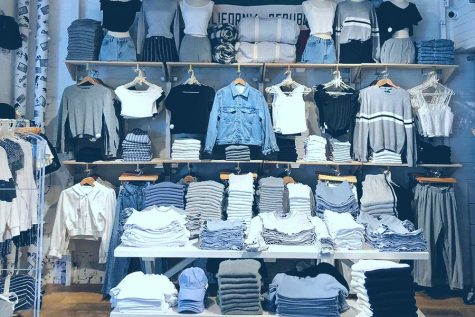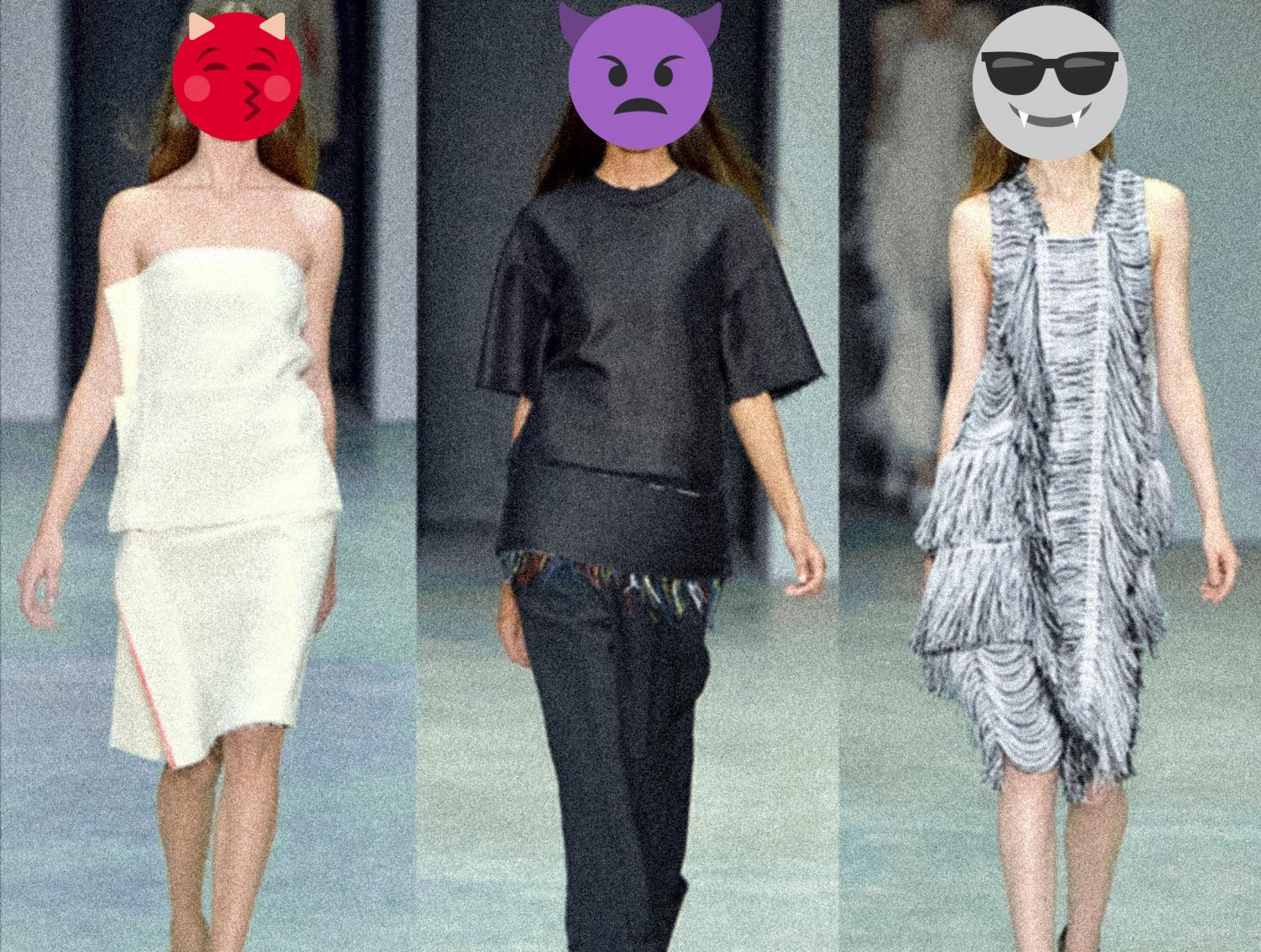False Beauty: The Dark Side of The Fast Fashion Industry
Despite the body positivity movement, the fashion industry still promotes the idea that thin is the ideal
January 10, 2020
“I want to lose weight.”
Time and time again that phrase has been used – from formal fittings, to a pair of skinny jeans; it is a staple statement of the female clothing industry.
Despite being raised in an age encouraging body positivity, this image of the “ideal” thin woman has been worshiped in popular culture since the early 1900s. Justifications for such an image have ranged from promoting a “healthy” lifestyle to looking like your favorite celebrity. However, despite the constant cycle of fad diets, gastric sleeves, and workout plans, America is experiencing a new epidemic: obesity.
In the past decade, the obesity rate among teens has tripled, with Livestrong’s Karen Hellesvig-Gaskell stating that around 18% of kids 6-19 in America are obese, not just overweight . With this growing crisis, one would expect a more proactive reaction, however, instead of providing solutions, there as been negative backlash, especially from the clothing industry. Instead of inclusivity in clothing brands, more and more “one size fits all” brands have risen to popularity, especially among teenage girls.
One of these brands, which has been popularized in recent years, is Brandy Melville. Started in Italy in 1970, the brand has taken over social media platforms, becoming the clothing of choice for influencers everywhere. Why? Because it’s cute, cheap, and trendy. When asked what other girls thought about the brand I received a similar answer.
“I think that the clothes are really cute, it’s a good way for people to obtain a fashion sense. However, I think it’s demeaning that they only have one size,” junior Quinn Taylor said.
Unlike most stores that hire models and style them, Brandy Melville ingeniously hires teenage girls and has them pick out clothes they like and then take pictures of each other. This strategy, while casual and unconventional, establishes a precedent. Brandy then takes that information and analyzes what they bought and which items were the most popular.

On top of that, Brandy requires to see its prospective employees’ social media accounts before hiring. In an age where social media plays a large role in social interaction, Brandy Melville wants to make sure that their own employees possess high-follower accounts and fit the style they are trying to promote. Marketing-wise, this is brilliant; Brandy knows its demographic, therefore generating more cash. I understand the importance of appeal, and if their clothes aren’t appealing to the average teenage girl, they wouldn’t still exist. But there is the problem: the brand itself doesn’t appeal to the average girl, but to the small percentage of females who fit a size small to extra small. There is a lack of diversity in body type and race, reminding teenage girls of a toxic concept: Skinny is healthy and losing weight is the only way to obtain beauty.
Brandy Melville is not the only brand that promotes this attitude. Take a look at Abercrombie and Fitch. The brand is also known for not making sizes above XL, with Abercrombie’s CEO Michael Jeffries stating to Salon in 2006 that the brand doesn’t “market to anyone other than cool, good-looking people”, which would explain why the store’s “XL” doesn’t truly fit XL women. While there has been criticism directed towards Abercrombie, the brand is still thriving and still not budging on producing clothes for women and men of all sizes. The main argument for why these stores don’t have to make more sizes is that there are plus size stores, so why not “petite” stores?
It isn’t the sizes themselves that bother me, rather the direct fat-shaming these companies have produced. Yes, there are plus size stores, but a rising majority of them also contain petite sections, with advertisements supporting all body types and not shaming anyone whether they are a size 0 or a size 14. On top of this, these stores are part of the growing fast-fashion industry where clothes, which tend to be low quality and cheap, are produced at break-neck speed in mass to keep up with weekly trends.
Fast fashion is bad for two reasons: environmental impacts and human rights violations. Each year, according to The Good Cut’s Audrey Stanton, the United States throws out eleven million pounds of clothing, the majority of which is made from synthetic materials that damage local water supplies after wash. Alongside the environmental damages, garment workers often have to work long hours, work with toxic materials – including pesticides and lead – and often endure physical abuse. Luckily, “slow fashion” fashion that promotes ethical and mindful clothing production has been rising in popularity, but not at the same speed as fast fashion.
I am not shaming those who choose to shop at Brandy Melville, Abercrombie and Fitch, or any other store, but rather encouraging awareness. Whether it is promoting sizes from 0 to 16, paying attention to the materials your clothes are made from, or checking where clothes are being produced, there are simple steps to get rid of the monster that fast fashion has become, something that won’t evolve for good unless we, as consumers, remain proactive.
